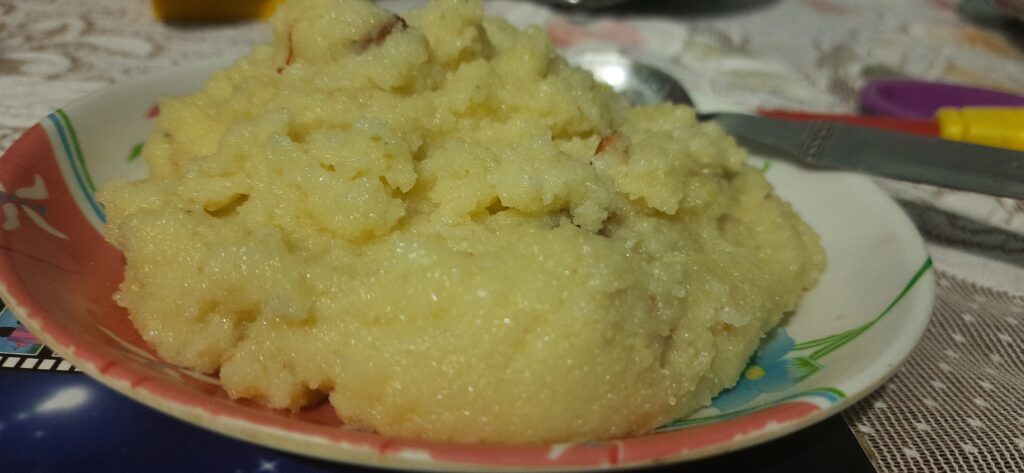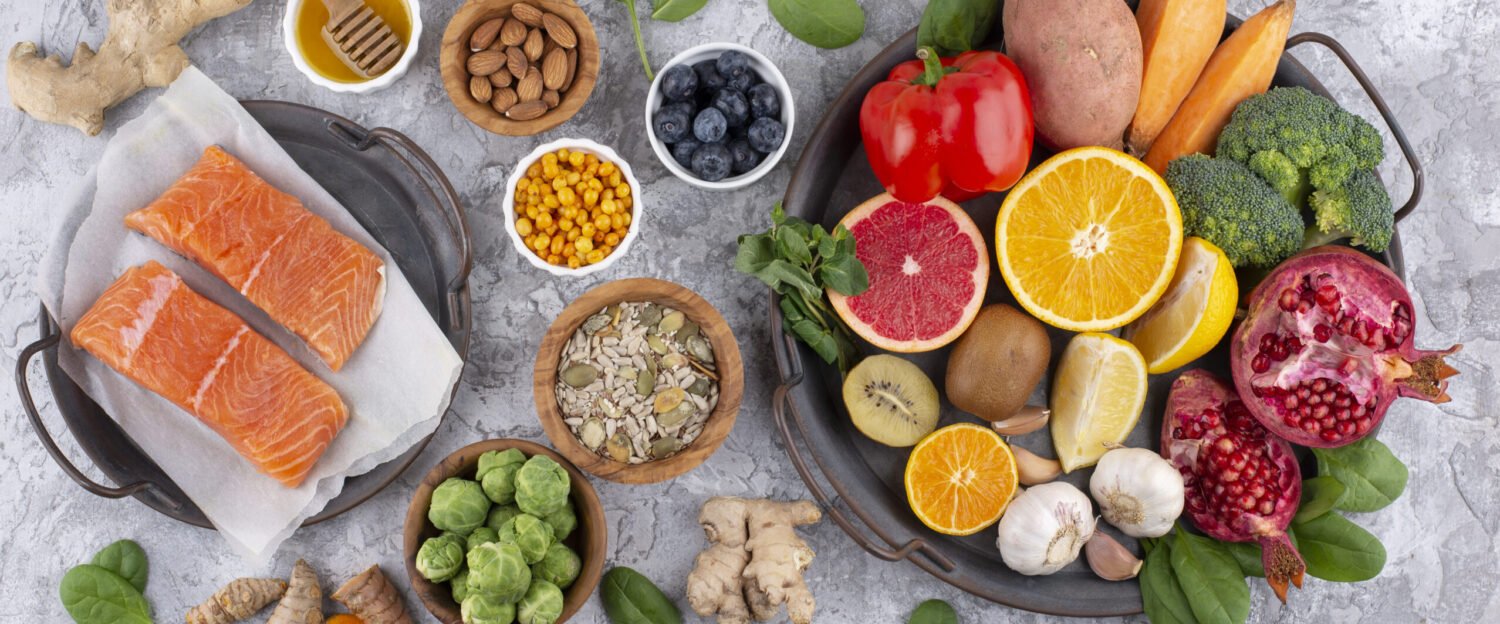
Table of Contents
Introduction:
Rava Kesari (semolina) is a sweet prepared mainly during puja and festivals. This recipe for Rava Kesari is a wonderful introduction to this beloved Indian dessert. With the right balance of semolina, sugar, ghee, and aromatic cardamom, it promises a rich and flavorful treat. The step-by-step instructions ensure a smooth cooking process, making it accessible even for those new to Indian cuisine.
Remember, the key to a perfect Rava Kesari lies in patience and attentive stirring. Achieving that golden brown hue and nutty aroma during the roasting stage is crucial for the dish’s overall flavor profile. The addition of saffron strands and food coloring offers a beautiful touch, enhancing both visual appeal and taste. The inclusion of cashews and raisins brings a delightful crunch and sweetness to each bite, while the cardamom powder adds a fragrant, aromatic note that’s quintessential to Indian desserts.
Once the mixture comes together, it’s important to allow it to cool before cutting, ensuring clean and presentable slices or present it in a bowl. The option to garnish with extra nuts or saffron strands provides a lovely finishing touch, making it a visually striking dessert. Serving Rava Kesari warm allows its flavors to truly shine, making it an ideal treat to share with loved ones. Happy cooking!
Rava Kesari is a popular South Indian sweet dish that is often prepared during festivals, celebrations, and special occasions. It is known by different names in different regions, such as Kesari Bath in Karnataka and Sheera in some parts of India. The dish is made primarily from semolina (rava or sooji), sugar, ghee (clarified butter), and water, and it is flavored with cardamom.
Tips to Make Rava Kesari :
Here are some key points about Rava Kesari:
Ingredients:
- Semolina (Rava/Sooji): It serves as the main ingredient and provides the texture to the dish. Roasting the semolina is a crucial step to enhance its flavor.
- Ghee (Clarified Butter): Adds richness and a distinctive flavor to the Kesari. Ghee is typically used in South Indian sweets for its aromatic quality.
- Sugar: Sweetens the dish. The quantity of sugar can be adjusted based on personal preferences.
- Water: Combines with sugar to form a syrup that is mixed with the roasted semolina.
- Cardamom Powder: Adds a delightful and aromatic flavor to the Kesari.
- Nuts and Raisins: Cashews and raisins are commonly used for garnishing. They add a crunchy texture and enhance the overall taste.
- Saffron (optional): Some variations include saffron to give the Kesari a vibrant yellow color.
Cooking Process:
- Roasting Semolina: The semolina is dry-roasted until it turns golden brown. This step is crucial as it imparts a nutty flavor to the dish.
- Sugar Syrup: A simple syrup is made by dissolving sugar in water. This syrup is gradually mixed with the roasted semolina.
- Ghee Addition: Ghee is added gradually, enriching the Kesari with its buttery flavor.
- Flavoring: Cardamom powder is added for its aromatic essence. Saffron may be used for color and added fragrance.
- Garnishing: Cashews and raisins are roasted separately in ghee and then added to the Kesari for texture and flavor.
- Consistency: The mixture is cooked until it thickens and reaches a halwa-like consistency, allowing it to set when cooled.
Serving:
- Rava Kesari is often served warm as a dessert or sweet dish.
- It can be shaped into pieces or served in bowls.
Variations:
- Some variations include the addition of fruits like pineapple or banana for extra flavor.
- Different regions may have slight variations in the recipe.
Rava Kesari is not only delicious but also relatively easy to prepare, making it a popular choice for celebrations and gatherings.
Rava Kesari
Ingredients
- Semolina Rava/Sooji: 1 cup
- Ghee clarified butter: 1/2 cup
- Sugar: 1 cup adjust to taste
- Water: 2 cups
- Cardamom powder: 1/2 teaspoon
- Cashews: 2 tablespoons chopped
- Raisins: 1 tablespoon
- Saffron strands: a pinch optional, for color
- Food coloring orange: a few drops (optional)
- **A pinch of salt
Instructions
Roasting Semolina:
- Heat a pan on medium heat. Add the semolina and roast it until it turns golden brown and you can smell the roasted aroma. Keep stirring to avoid burning. This step is crucial for the flavor of the Kesari.
Prepare Sugar Syrup:
- In a separate saucepan, heat water. Once it starts simmering, add sugar and stir until it dissolves completely.
Combine Semolina and Sugar Syrup:
- Slowly add the roasted semolina to the sugar syrup, stirring continuously to avoid lumps.
Cooking Semolina Mixture:
- Keep stirring on low to medium heat until the mixture thickens. It will start to leave the sides of the pan.
Add Ghee:
- Add ghee in small increments while continuously stirring. The ghee adds richness and flavor to the Kesari.
Flavoring:
- Add cardamom powder and saffron strands (dissolved in a little warm milk for better color). Stir well to evenly distribute the flavors.
Roast Nuts:
- In a separate small pan, roast cashews and raisins in a little ghee until the cashews turn golden brown.
Garnish:
- Add the roasted nuts to the Kesari mixture and mix well. You can also add a few drops of orange food coloring if you want a vibrant color.
Serve:
- Once the mixture reaches a halwa-like consistency, remove it from heat. Serve the Rava Kesari warm.
Notes
- Enjoy this delicious and aromatic Rava Kesari as a dessert or during special occasions. Adjust the sugar quantity to suit your sweetness preferences.
Nutrition:
The nutritional values for Rava Kesari can vary based on the specific recipe and portion size. Here’s a general breakdown of the key components and their approximate values per 100 grams:
- Calories: 200-250 kcal
- Protein: 2-3 grams
- Carbohydrates: 40-50 grams
- Sugars: 20-30 grams
- Dietary Fiber: 1-2 grams
- Fat: 5-8 grams
- Saturated Fat: 2-3 grams
- Monounsaturated Fat: 2-3 grams
- Polyunsaturated Fat: 1-2 grams
- Sodium: 5-10 milligrams
- Potassium: 50-100 milligrams
- Calcium: 20-30 milligrams
- Iron: 1-2 milligrams
- Vitamin C: 0 milligrams
- Vitamin A: 0 micrograms
- Folate (B9): 20-30 micrograms
